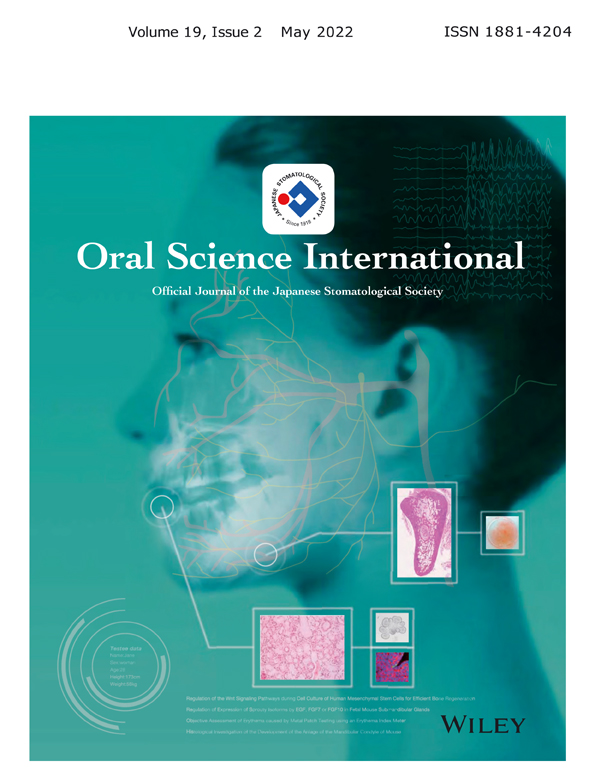Efficacy of diffusion-weighted imaging in the diagnosis of osteoporosis suggested by the correlation between mandibular cortex width and apparent diffusion coefficient of the mandibular bone marrow
Funding information: The authors state that this work has not received any funding.
Abstract
Purpose
The objectives of the study were as follows: (i) to compare MCW and ADC stratified by menopause and osteoporosis, (ii) to calculate the correlation of the MCW on panoramic radiographs with the ADC in the mandibular bone marrow, and (iii) to investigate the utility of DWI of the jaws in the diagnosis of osteoporosis.
Material and Method
This study analyzed 87 normal patients and 23 patients with osteoporosis. The patients were divided into three groups: premenopausal (n = 33), postmenopausal (n = 54), and osteoporosis (n = 23). We investigated the MCW and mean ADC of the mandibular bone marrow. We analyzed the data using the Spearman's correlation coefficients, Kruskal-Wallis test, and post-hoc Mann-Whitney tests with Bonferroni adjustments, and a receiver operating characteristic (ROC) curve was plotted. Statistical significance was set at P < 0.05.
Results
There were significant between-three group differences in both the mean ADC and mean MCW (p < 0.001). Furthermore, there was a significant positive correlation between MCW and the ADC of the mandibular bone marrow in postmenopausal group (p < 0.05). The ROC analysis revealed a cutoff ADC value of 0.62 to distinguish between the postmenopausal and those with osteoporosis.
Conclusions
In addition to evaluating the MCW, which is currently used for osteoporosis evaluation, measuring the ADC of the mandibular bone marrow could contribute toward the examination of osteoporosis.
CONFLICT OF INTEREST
We have no competing interests.




